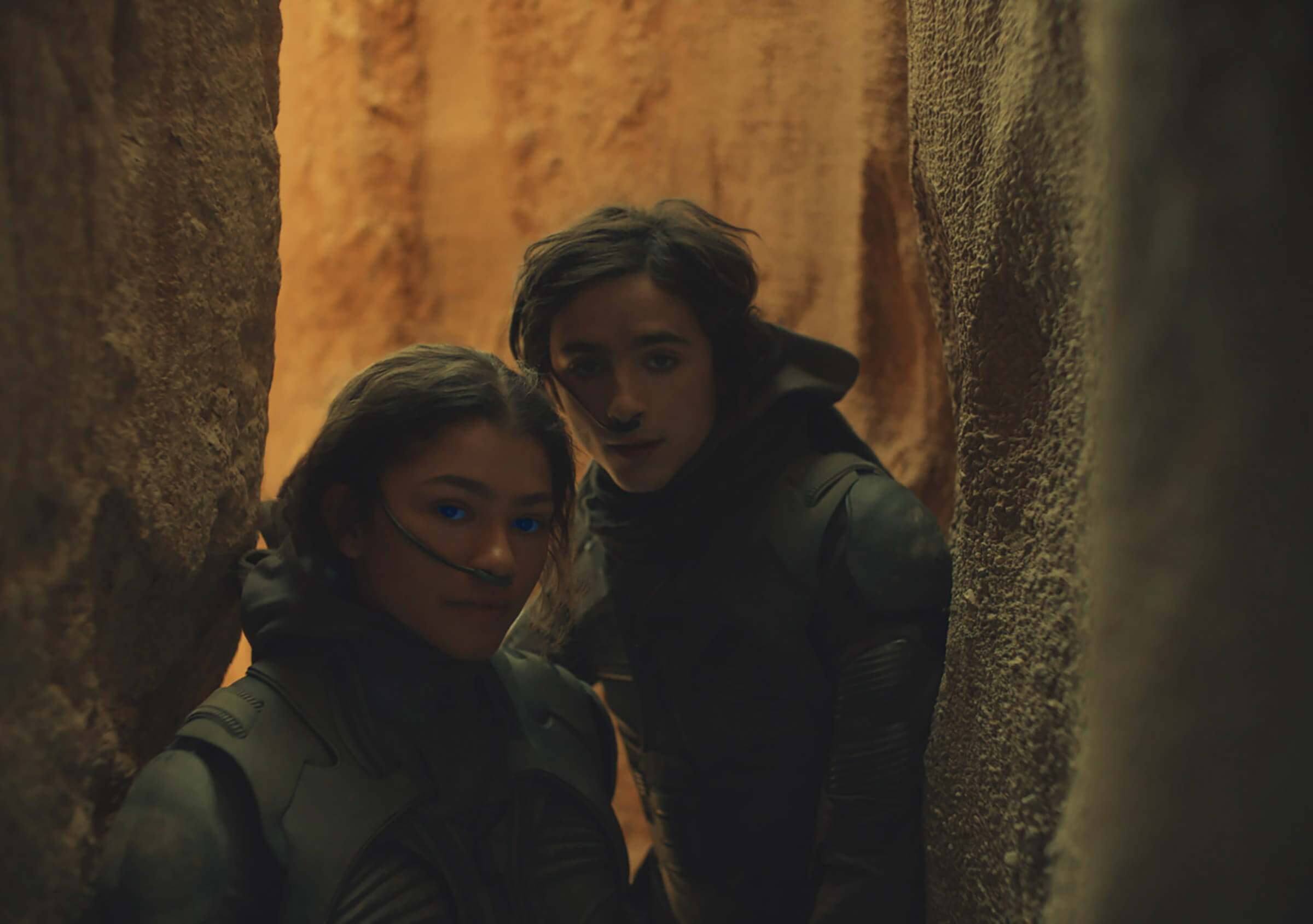This article contains spoilers for the movie “Dune: Part Two.”
In this movie, Denis Villeneuve continues the anthology of Paul Atreides (Timothée Chalamet) as he chronicles Paul’s tragic ascent to power. After the Harkonnens and Padishah Emperor Shaddam IV (Christopher Walken) attempt an attack to eliminate the Atreides bloodline, Paul and his mother, Lady Jessica (Rebecca Ferguson), live amongst the natives of Arrakis, the Fremen. In order for Paul to avenge the collapse of his noble house and his father’s death, he must abuse the Fremen’s religion and convince them that he is their prophet, Muad’Dib. “Dune: Part Two” sees Paul start to become the “Dune Messiah” in a storytelling masterclass so perfect that its flaw gets buried in the sand.
In a world dominated by three-hour-long slogs of movies, “Dune: Part Two” never drags for a second. Even viewers who have not watched the first film will be captivated by the opening scene, gripping their attention for the remainder of the movie. Breathtaking shots filmed on location, out-of-this-galaxy costume design and a hypnotic score bring the viewers into the distant desert world of Arrakis. These cinematic elements, coupled with Villeneuve’s ability for visual storytelling, give the audience all the information they need without slowing down to drop exposition. These seamless storytelling techniques allow the two-hour and 46-minute run time to cut between vastly different and vibrant locations while introducing new characters without missing a beat.
While their roles are limited, Walken and Florence Pugh deliver stellar performances. Walken exudes gravitas, commanding the screen as Shaddam IV. His iconic voice only furthers the weight behind his words when ordering his armies to invade Arrakis. Pugh nails the royal elegance and the calculating mind of the emperor’s daughter, Princess Irulan. If more Dune films are to come, Pugh is teed up for a fantastic role. “Dune: Part Two” also introduces audiences to the two standout characters of the series, Feyd-Rautha (Austin Butler) and Chani (Zendaya).
Butler steals every scene he appears in, which is saying a lot, considering the character was previously portrayed by a speedo-wearing Sting in David Lynch’s 1984 adaptation, “Dune.” Butler disappears into the role of a psychotic maniac. Not only does he bring the physicality needed to make this a terrifying role, but he sells his performance through the subtlety of his movements as well. Every tilt of the head, gawking of the mouth and unblinking stare give an unsettling air to the character. Surrounded by the intimidating presence of Stellan Skarsgård as Baron Harkonnen and Dave Bautista as Beast Rabban, Butler delivers an incredibly memorable villain performance.
Zendaya nails every aspect of her character Chani. She sells the defiant badass who does not believe in the prophecy of Muad’Dib worshipped by the older Fremen. She is a commanding presence in the hand-to-hand combat scenes. Zendaya also delivers a softer side of Chani, whose character is in love with Paul. Her chemistry with Chalamet is adorable and convincing enough to make viewers believe their characters actually care for each other. By the time audiences invest in their relationship, it takes a harsh turn. The relationship never feels like Spider-Man’s girlfriend is making out with Timothée Chalamet; they feel like their respective characters are falling in love. This same disappearance into the roles can be said for everyone in the film.
Even though the movie juggles so many big Hollywood names, all the actors embody their roles—making it easy to forget that you are watching a movie with a plot and characters. “Dune: Part Two” does not feel like the traditional three-act film structure, where the audience watches some characters do something for a few hours. Instead, “Dune: Part Two” feels like watching people’s lives unfold as they make decisions in real time. It is hard to stress and even harder to describe the magical feeling of forgetting one is watching a movie while they are viewing it.
Even though this storytelling excellence is true, it does fall apart at the end. The heroes get to the final battle mighty fast. For two hours and 20 minutes, it is guerrilla warfare and leaves the Fremen wondering if Paul is the messiah. In the final 20 minutes, the film jumps to a full-on planetary invasion, with Paul inciting a religious war in his name. Since audiences know the event will happen due to Paul’s visions in the first and second films, these actions do not seem to come out of nowhere; however, the sudden escalation is a bit jarring.
The final issue with the ending to “Dune: Part Two” is “Dune: Part Three.” Just like the first film, “Dune: Part Two” does not end on a satisfying note. Although Paul does finish his character arc set up in part one, part two leaves the audience with the sinking feeling of “What happens next?” After waiting almost three years to see the next chapter in Paul’s story, it is very underwhelming for it to end on yet another cliffhanger.
Seeing that there is still one more part to go before the “Dune” series reaches its epic conclusion, “Dune: Part Two” is difficult to rate because it is not a complete story. That being said, the story we did get is incredible. Everything in it, from the visuals to the score to the performances, all ranges from top-notch to perfection. This franchise is well on its way to becoming the best science fiction since “Star Wars.”
Rating: 8.5/10
—
Featured Image via Legendary Pictures

